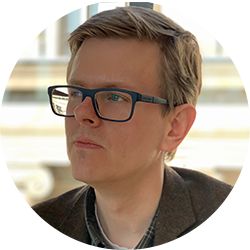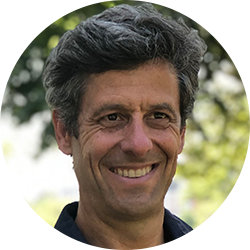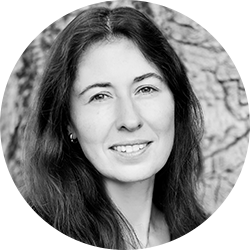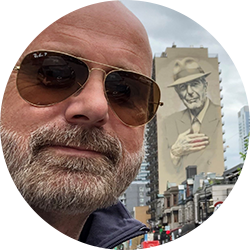-
Membership
Membership
Anyone with an interest in the history of the built environment is welcome to join the Society of Architectural Historians -
Conferences
Conferences
SAH Annual International Conferences bring members together for scholarly exchange and networking -
Publications
Publications
Through print and digital publications, SAH documents the history of the built environment and disseminates scholarship -
Programs
Programs
SAH promotes meaningful engagement with the history of the built environment through its programs -
Jobs & Opportunities
Jobs & Opportunities
SAH provides resources, fellowships, and grants to help further your career and professional life -
Support
Support
We invite you to support the educational mission of SAH by making a gift, becoming a member, or volunteering -
About
About
SAH promotes the study, interpretation, and conservation of the built environment worldwide for the benefit of all
Program Date: Friday, December 3, 2021
Finding rigorous ways to account for the nonvisual senses has increasingly become an important priority for architectural history. In recent years, curators of museums and historic buildings have begun to explore new ways to evoke the sensory experiences of people in the past. Ongoing shifts in architectural media continue to overturn many of the visualist assumptions associated with hand drawing, printed books, and analog photography. In dialogue with these developments, new approaches in the history and anthropology of the senses have advanced scholarship on architecture and sensation well beyond the assumptions of early phenomenological writers.
This conversation explores emerging methods and strategies for considering sensory experience in scholarship on buildings and cities. Is it possible to write an experientialist history without insisting upon a single universal standpoint? How might historians compensate for the visual media that we overwhelmingly rely upon to study the built environment? What can architectural research contribute to the history of mentalities? To answer these questions, the discussion will consider how scholars are reworking earlier historiographic models and bringing them into dialogue with actor-network theory, sound studies, and other newer areas of research. We will discuss how these approaches have not only spurred the development of experimental research methods but also destabilized and expanded the architectural canon by prompting fresh accounts of historic buildings and cities.
Panelists:
-
Niall Atkinson, University of Chicago
-
Joseph L. Clarke, University of Toronto
-
David Karmon, Holy Cross
-
Bissera V. Pentcheva, Stanford University
-
Mark Smith, University of South Carolina
Panelists

Niall Atkinson is Associate Professor of Art History and Romance Languages and Literatures at the University of Chicago. His research focuses on the experience of architecture and urban space in early modern Italy to explore the built environment as a collective social construction of the body’s sensorial apparatus. His recent work on the construction of civic society by sound, space, and architecture culminated in The Noisy Renaissance: Sound, Architecture, and Florentine Urban Life (2016). He is co-writing a book on the urban visual and spatial effects of the narratives and itineraries of French travelers to early modern Rome, experimenting with geo-referenced spatial history methods to map the sensory experiences of early modern cities, and contributing to an interdisciplinary collaborative project exploring the cultural interactions of the Indian Ocean. In 2018, he co-curated the US Pavilion at the Venice Architecture Biennale on the theme, “Dimensions of Citizenship.”

Joseph L. Clarke is a modern architectural historian and an assistant professor at the University of Toronto Department of Art History. His scholarship tends to approach modern architecture through the question of disciplinarity—that is, the theories, methods, and forms of representation that have defined architecture as a distinct field of knowledge and practice. Clarke’s work also frequently draws on media theory to explore how architectural ideas are represented and disseminated, and how buildings themselves facilitate communication. His book Echo’s Chambers: Architecture and the Idea of Acoustic Space (University of Pittsburgh Press, 2021) considers how the imperative to mediate sound in buildings has challenged European systems of architectural thought since the Enlightenment. Clarke has held visiting fellowships at the Canadian Centre for Architecture and the Max Planck Institute for the History of Science. Trained as a designer, he previously practiced architecture at Eisenman Architects and Skidmore, Owings & Merrill.

David Karmon is editor of the Journal of the Society of Architectural Historians and has written on architecture and urbanism for numerous journals, anthologies, and exhibition catalogues. His most recent book, Architecture and the Senses in the Italian Renaissance: The Varieties of Architectural Experience (2021), examines how Renaissance architecture and urbanism choreographed the sensory experiences of visitors to these sites, acting as an “experiential trigger” that shaped ways of thinking and being in the world. His previous book, The Ruin of the Eternal City: Antiquity and Preservation in Renaissance Rome (2011), explored how early modern preservation strategies ensured the survival of key remains despite failing to conform to contemporary preservation ideals. His new project is a book on Renaissance architecture and natural history.

Bissera V. Pentcheva's innovative work in acoustics, art, and music has redefined the field of Byzantine architecture and is now expanding into Western medieval art. She has published three books with Pennsylvania State University Press: Icons and Power: The Mother of God in Byzantium (2006), which received the Nicholas Brown Prize of the Medieval Academy of America, 2010, The Sensual Icon: Space, Ritual, and the Senses in Byzantium (2010), and Hagia Sophia: Sound, Space and Spirit in Byzantium (2017), which received the 2018 American Academy of Religion Award in excellence in historical studies. Pentcheva has edited two volumes: Aural Architecture in Byzantium: Music, Acoustics, and Ritual (Ashgate, 2018) and Icons of Sound: Architecture, Music and Imagination in Medieval Art (Routledge, 2020). Her work is informed by anthropology, music, sound studies, and phenomenology.

Mark Smith is Carolina Distinguished Professor of History and Director of the Institute for Southern Studies at the University of South Carolina and author or editor of over a dozen books on sensory history and the history of the US South. Smith’s work has been funded by the National Science Foundation, the British Academy, the Mellon Foundation, and the Watson-Brown Foundation. He is the Editor of Cambridge University Press’ Studies on the American South, and of Penn State University Press’ Perspectives in Sensory History. Smith is a Fellow of the Royal Historical Society and currently serves on the US Commission for Civil Rights. He is currently working on several projects, including a book on the intersection between environmental disasters and US foreign policy in the post-Civil War period. Recent publications include A Sensory History Manifesto (2021), and with Rob Boddice, Emotion, Sense, Experience (2020).


